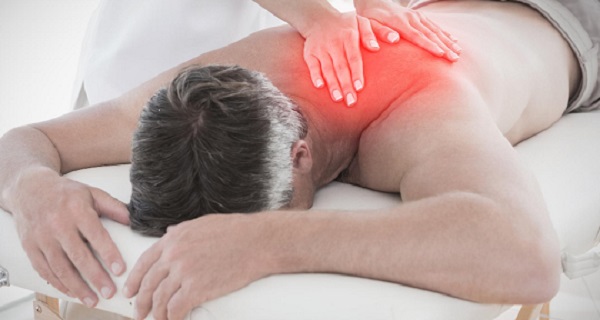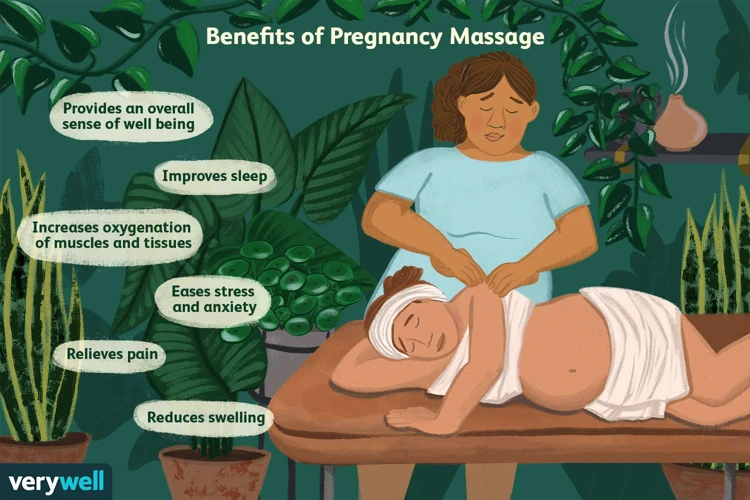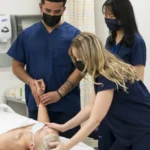Massage therapy is a widely practiced form of holistic healing used to support both physical and mental well-being. While it offers many benefits, there are times when it may not be safe or appropriate. Understanding the contraindications for massage therapy is essential for ensuring client safety and delivering responsible care. In this article, we’ll explore when massage therapy is contraindicated, the conditions that may require caution, and how therapists can make informed decisions to protect their clients’ health.
Table of Contents
Definition of Massage Therapy

- Massage therapy is the manipulation of soft body tissues (such as muscles, ligaments, tendons, and connective tissue) to improve overall health and wellbeing.
- It is a hands-on approach to healing the body by applying pressure to specific points, known as pressure points, to relieve tension and promote relaxation.
- It can also be used to reduce or eliminate pain, improve circulation, increase flexibility, and relieve stress.
- Massage therapy can be used for a variety of conditions including sports injuries, postural imbalances, and chronic pain.
Massage therapy is a safe and effective way to promote healing and relaxation, but there are certain precautions that must be taken to ensure a safe and effective treatment. What is contraindication in massage? A contraindication is a condition or situation in which a particular treatment is not recommended because it may be harmful or detrimental to the patient. It is important to be aware of these contraindications before beginning any massage therapy session.
Definition of Contraindication

Contraindication is a medical term that refers to a condition or factor that makes a certain treatment or procedure inadvisable. It is important for massage therapists to understand the contraindications of massage therapy, as it can be dangerous or even life-threatening for a client if the situation is not recognized and properly managed.
- Contraindications for massage therapy may be temporary or permanent. For example, a client may have a temporary contraindication due to a recent injury or surgery, while chronic diseases or conditions such as cancer may be a permanent contraindication.
- Conditions that may be contraindicated for massage therapy include but are not limited to: recent surgery, uncontrolled diabetes, active cancer, deep vein thrombosis, fractures, open wounds, heart conditions, and any condition that is contagious.
- It is important for massage therapists to assess each client’s medical history before providing massage therapy, and to discuss any potential contraindications with the client.
- What medications are contraindicated for massage? Certain medications, such as anticoagulants and those with anti-inflammatory properties, may be contraindicated for massage therapy. It is important to ask the client about any medications they are taking prior to providing massage.
It is also important for massage therapists to be aware of any potential contraindications that might arise during massage, such as dizziness, lightheadedness, nausea, or pain. If any of these symptoms occur during the massage, the therapist should stop the session and consult with the client’s physician before continuing the massage.
By understanding the contraindications of massage therapy, massage therapists can help ensure their clients’ safety and well-being.
When Massage Therapy is Not Appropriate

Pregnancy
Massage therapy is generally considered safe for pregnant women. However, certain conditions may make it contraindicated, including advanced stages of pregnancy, preeclampsia, or any other medical condition that may affect the safety of the mother or baby. In these cases, massage therapy should be avoided.
Acute Injury
Massage therapy is not recommended for acute injuries, such as a broken bone or muscle tear. Applying massage to an acute injury can cause further damage, inflammation, and pain. In these cases, medical attention should be sought and massage should not be applied until the injury has healed.
Infectious Diseases
Infectious diseases, such as colds, flus, and STIs, can be transmitted through massage therapy. If a client is infected, it is not safe for them to receive massage until the infection has cleared.
Certain Medications
Certain medications, such as blood thinners, can increase the risk of bleeding and bruising during massage. It is important to ask clients about any medications they are taking and determine if massage is safe.
Certain Medical Conditions
Additionally, massage therapy is not recommended for clients with certain medical conditions, such as cancer, heart disease, or diabetes. In these cases, it is important to consult with a doctor before receiving massage.
Skin Conditions
Massage therapy can also be contraindicated for certain skin conditions, such as psoriasis, eczema, or open wounds. These conditions can be aggravated by massage and should be avoided.
Find a Certified Massage Therapist
Massage therapy can be beneficial for many conditions, but there are certain cases where it is not appropriate. It is important to understand the contraindications and to ensure the safety of the client.
It is also important to ensure that the massage therapist is properly trained and certified. This will help to ensure that the massage is safe and beneficial for the client.
Potential Benefits of Massage Therapy

- Stress relief: Massage can help to reduce stress levels and improve relaxation.
- Pain management: Massage can help to relieve chronic pain and muscle tension.
- Improved blood flow: Massage can help to improve circulation, leading to better oxygen and nutrient delivery to the cells.
- Immune system boost: Massage can help to boost the immune system and reduce inflammation in the body.
- Improved sleep: Massage can help to improve the quality of sleep, leading to better overall health.
- Increased flexibility: Massage can help to improve flexibility and range of motion in joints and muscles.
- Mental clarity: Massage can help to improve mental clarity and focus, leading to better decision-making and problem-solving.
- Reduced anxiety: Massage can help to reduce anxiety and promote a sense of well-being.
Potential Risks of Massage Therapy

- Skin irritation: Massage can cause irritation to the skin if the massage oil, cream or lotion is not suitable for the client. It is also possible for the skin to become irritated or inflamed if the massage therapist applies too much pressure.
- Bruising: Bruising can occur because of the massage technique used, especially in deep tissue massage. If the pressure is too intense, it can cause bruising of the skin.
- Infection: If the massage therapist does not use proper hygiene and sanitation techniques, it is possible for the client to contract an infection or other contagious disease.
- Nerve damage: If the massage therapist applies too much pressure or uses the wrong techniques, it is possible for the client to experience nerve damage.
- Muscle strain: Massage therapy can cause the muscles to become strained if the massage therapist applies too much pressure or uses the wrong techniques.
- Blood clots: Deep tissue massage can cause the formation of blood clots if the massage therapist applies too much pressure. This can be dangerous and should be avoided.
- Allergic reactions: Massage therapy can cause allergic reactions if the massage oil, cream or lotion contains ingredients that the client is allergic to.
How to Find an Appropriate Massage Therapist
- Research: Look for the qualifications and experience of the massage therapist. Check the reviews and ratings of the therapist in order to get an idea of their quality of service.
- Ask for Referrals: Get references from family and friends who have received massage therapy from a therapist. Ask for their feedback and opinion about the therapist.
- Talk to Therapist: Before scheduling an appointment, talk to the therapist to get an understanding of their qualifications and experience. Ask them about their areas of expertise, and which techniques they use.
- Experience: Look for a massage therapist who has experience in treating the condition that you are suffering from. Also, look for the therapist who is certified to provide the kind of massage therapy that you need.
- Check Credentials: It is important to ensure that the massage therapist is licensed, certified and insured. Verify the credentials of the therapist before scheduling an appointment.
- Discuss Contraindications: Before starting the massage session, it is important to discuss the contraindications of massage therapy with the therapist. This will help to ensure that the massage session is safe and effective.
Frequently Asked Questions
What are the Common Contraindications for Massage Therapy?
- Infectious Diseases: Massage therapy is not recommended for those with infectious diseases, such as chickenpox, colds and flu, and communicable skin diseases.
- Blood Clots: Massage can increase the risk of forming blood clots, so it is not appropriate for those with a history of blood clots.
- Fever: Massage is not recommended for those with fever.
- Recent Surgery: Massage should not be performed on areas that have recently had surgery.
- Cancer: Massage can cause the spread of cancer cells, so it is not recommended for those with cancer.
- Open Wounds: Massage is not recommended for those with open wounds.
- Inflammation: Massage is not recommended for those with inflammation in any area.
- Injury: Massage is not recommended for those with recent or acute injuries.
- Deep Vein Thrombosis: Massage can increase the risk of deep vein thrombosis, so it is not recommended for those with this condition.
What are the risks if a massage is administered to someone with contraindications?
Administering massage therapy to someone with contraindications can result in serious health risks and even death. For instance, if a client has a bleeding disorder, massage can cause excessive bleeding. Additionally, if a pregnant woman is given massage in the wrong area, it can lead to complications such as miscarriage. Furthermore, if someone has an infection, massage therapy can cause the infection to spread. It is important for massage therapists to be aware of any contraindications a client may have to ensure the safety of their clients.
What Should a Massage Therapist Consider Before Administering a Massage?
Medical History: A massage therapist should ask their client about their medical history and whether they have any medical conditions that may be contraindicated for massage.
Current Health Status: The therapist should inquire about the client’s current health status and any pain or discomfort they may be currently experiencing.
Medication: The massage therapist should also ask the client about any medications they are taking and how it may affect the massage session.
Allergies: The therapist should ask the client if they have any allergies to essential oils, lotions, or other products that may be used during the massage.
Injuries: The therapist should ask the client if they have any recent or old injuries that may be exacerbated by the massage.
Expectations: The therapist should discuss with the client what their expectations of the massage are, and any concerns they may have.
Contraindications: The massage therapist should be aware of any contraindications for massage, such as pregnancy, fever, or certain medical conditions that may be affected by the massage.
How can a massage therapist determine if a client is suitable for a massage?
Consultation: A massage therapist should conduct a comprehensive consultation with the client to identify any potential contraindications and to determine the client’s expectations and goals for the massage.
Medical History: The massage therapist should enquire about any past or current medical conditions, medications, and allergies, as these could be risk factors and contraindications for massage.
Physical Assessment: A physical assessment should be performed to check for any physical abnormalities. This could include checking for skin conditions, bruises, or other signs of injury.
Contraindications: The massage therapist should be aware of any contraindications that may prevent the client from receiving a massage. These include infections, bleeding disorders, joint replacement, and other serious medical conditions.
Consent: The massage therapist should also obtain the client’s written consent prior to the massage session. This consent should include any risks, contraindications, and other relevant information.
What Should a Massage Therapist Do if They Detect Any Contraindications During a Massage Session?
Stop the Massage – A massage therapist must immediately stop the massage session if any contraindications are detected.
Check for Conditions – A massage therapist should check the client for any conditions that may be contraindicated during a massage session. This includes checking for any skin conditions, wounds, open sores, infections, or any other health issues that may be present.
Discuss Alternative Options – A massage therapist should discuss alternative options with the client if they detect any contraindications during a massage session. For example, if the client has a skin condition, the massage therapist may suggest a massage technique that is more gentle and does not involve direct contact with the affected area.
Refer to a Physician – If the massage therapist believes the client may have a medical condition or a condition that requires further medical attention, they should refer the client to a physician.
Document the Session – A massage therapist should document the session and any contraindications that were detected. This documentation should be included in the client’s records and be used for future reference.
📣 Final Thoughts
Massage therapy is a beneficial form of therapy for many individuals. However, there are certain conditions or situations where massage therapy is not appropriate or could even cause harm. It is important for massage therapists to recognize and understand the contraindications of massage therapy in order to ensure the safety of their clients.
🔗 Related Articles
📚 Why Do I Feel Sick After A Massage
📚 What Toxins Are Released After Massage
📚 What to Do After a Deep Tissue Massage
📖 References
- Hernández-Reif, M., Field, T., Diego, M., Schanberg, S., & Kuhn, C. (2017). Contraindications to massage: A historical perspective. Complementary Therapies in Clinical Practice, 27, 25-29.
- Contraindications for Massage Therapy – MassageTherapy.com
- Contraindication. (n.d.). In Wikipedia
⚠️ Disclaimer:
This article is for informational purposes only and does not constitute medical advice. Always consult with a licensed healthcare provider or certified massage therapist before beginning any new treatment, especially if you have pre-existing health conditions or concerns.













